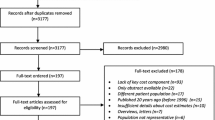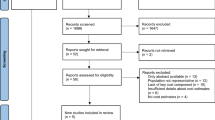Abstract
Objective: This study estimated the cost to UK society of an annual cohort of newly diagnosed patients with schizophrenia over the first 5 years following diagnosis, using an incidence-based cost-of-illness framework.
Design and setting: A discrete event model of the course of schizophrenia was constructed, based on a literature review and interviews among a panel of healthcare professionals (n = 7). Seven discrete disease stateswere definedwithin the model. Patients’ movements between these disease states enabled 10 disease courses to be identified. In each disease state, the model estimated resource use and corresponding costs borne by the National Health Service (NHS), Local Authorities, the Home Office and society as a result of lost productivity.
Patients and participants: The model simulated patients’ movements between disease states over the first 5 years following diagnosis. Since there are 7500 new cases of schizophrenia per year in the UK, the model was run for 7500 patient simulations.
Main outcome measures and results: The total discounted cost to society attributable to an annual cohort of newly-diagnosed patients with schizophrenia over the first 5 years following diagnosis was estimated at £862 million (range: £788 million to £926 million in sensitivity analysis). The discounted mean 5-year cost was estimated to be approximately £115 000 (range: £105 000 to £124 000) per patient or approximately £23 000 (range: £21 000 to £25 000) per patient per year.
The NHS accounted for 38% of the total cost, Local Authorities for 12% and the Home Office for 1%. Indirect costs due to lost productivity accounted for 49%.Of theNHS costs, hospital admissions accounted for 69% and hospital visits (outpatient, day ward and day centre attendances) for a further 26%. Drugs (antipsychotics and adjunctive medications) accounted for 2%.
Conclusions: NHS expenditure and lost productivity costs predominated, irrespective of disease course. This indicates that treatments that reduce hospitalisation and potentially enable patients to return to active employment could significantly reduce the societal burden of schizophrenia.
Similar content being viewed by others
References
Terkelsen KG, Menikoff A. Measuring the costs of schizophrenia: implications for the following institutional era in the US. Pharmacoeconomics 1995; 8: 199–222
Hyde TM, Weinberger DR. The brain in schizophrenia. Semin Neurol 1990; 10: 276–86
Wing JK. Mental illness. In: Stevens A, Raftery J, editors. Epidemiologically based needs assessment. London: HMSO, 1994
Goldacre M, Shiwach R, Yeates D. Estimating incidence and prevalence of treated psychiatric disorders from routine statistics: the example of schizophrenia. J Epidemiol Commun Health 1994; 48 (3): 318–22
Castle D, Wessely S, Der G, et al. The incidence of operationally defined schizophrenia in Camberwell, 1965-84. Br J Psychiatry 1991; 159: 790–4
Harrison G, Cooper JE, Gancarczyk R. Changes in the administrative incidence of schizophrenia. Br J Psychiatry 1991; 159: 811–6
Davies LM, Drummond MF. The economic burden of schizophrenia. Psychiatr Bull 1990; 14: 522–5
Crow TJ. Schizophrenia: diagnostic boundaries, epidemiology and brain changes. Clinician 1993; 11: 2–17
RLGregory. The Oxford companion to the mind 1987. Oxford: Oxford University Press, 1987
Davies LM, Drummond MF. Economics and schizophrenia: the real cost. Br J Psychiatry 1994; 165 Suppl. 25: 18–21
Langley-Hawthorne C. Modelling the lifetime costs of treating schizophrenia in Australia. Clin Ther 1997; 19 (6): 1470–95
The Scottish Schizophrenia Research Group. The Scottish first episode schizophrenia study VIII. Five year follow-up: clinical and psychosocial findings. Br J Psychiatry 1992; 161: 496–500
Geddes J, Mercer G, Frith CD, et al. Prediction of outcome following a first episode of schizophrenia: a follow-up study of Northwick Park first episode study subjects. Br J Psychiatry 1994; 165: 664–8
Lieberman JA. Prediction of outcome in first-episode schizophrenia. J Clin Psychiatry 1993; 54 (3 Suppl.): 13–7
Johnstone EC, Geddes J. How high is the relapse rate in schizophrenia? Acta Psychiatr Scand 1994; 89 Suppl. 382: 6–10
Shepherd M, Watt D, Falloon I, et al. The natural history of schizophrenia: a five year follow-up of outcome and prediction in a representative sample of schizophrenics. Psychol Med Monogr Suppl 1989; 15: 1–46
Brenner HD, Dencker SJ, Goldstein MJ, et al. Defining treatment refractoriness in schizophrenia. Schizophr Bull 1990; 16: 551–62
Schruben LW. Graphical simulation modeling and analysis. Danvers (MA): Boyd & Fraser, 1995
Wieselrgen IM, Lindstrom LH. A prospective 1-5 year outcome study in first-admitted and re-admitted schizophrenia patients: relationship to heredity, premorbid adjustment, duration of disease and education level at index admission and neuroleptic treatment. Acta Psychiatr Scand 1996; 93: 9–19
Baldwin JA. Schizophrenia and physical disease. Psychol Med 1979; 9: 611–8
Allebeck P. Schizophrenia: a life-shortening disease. Schizophr Bull 1989; 15 (1): 81–9
Mortensen PB, Juel K. Mortality and causes of death in first admitted schizophrenic patients. Br J Psychiatry 1993; 163: 183–9
Roy A. Suicide in chronic schizophrenia. Br J Psychiatry 1982; 141: 171–7
Fenton WS, McGlashan TH, Victor BJ, et al. Symptoms, subtype and suicidality in patients with schizophrenia spectrum disorders. Am J Psychiatry 1997; 154: 199–204
Netten A, Dennett J. Unit costs of health and social care 1996. Canterbury: Personal Social Service Research Unit, University of Kent at Canterbury, 1996
Knapp M, Kavanagh S. Economic outcomes and costs in the treatment of schizophrenia. Clin Ther 1997; 19 (1): 128–38
Lelliott P, Audini B, Knapp MRJ, et al. Mental health residential care: classification of facilities and description of services. Br J Psychiatry 1996: 169; 139–47
Monthly index of medical specialities. London: Haymarket Publications Ltd., 1997
Department of Health. Drug tariff. London: HMSO, 1997
Office of National Statistics. Labour market trends. London: HMSO, 1997
The Treasury. Annex G: the cost of capital discount rates and required rates of return. In: Appraisal and evaluation in central government. London: HMSO, 1997: 77
Kavanagh SM, Opit LJ, Knapp M, et al. Schizophrenia: shifting the balance of care. Soc Psychiatry Psychiatr Epidemiol 1995; 30: 206–12
Johnstone EC, Frith JD, Leary J, et al. Background, method and general description of the sample. Br J Psychiatry 1991; 159 Suppl. 13: 43–6
Knapp M. Costs of schizophrenia. Br J Psychiatry 1997; 171: 509–18
Tollefson GD, Beasely CM, Tran PV, et al. Olanzapine versus haloperidol in the treatment of schizophrenia and schizo-affective and schizophreniform disorders: results of an international collaborative trial. Am J Psychiatry 1997; 154: 457–65
Gerlach J, Peacock L. Motor and mental side effects of clozapine. J Clin Psychiatry 1994; 55 (9 Suppl. B): 107–9
Chakos MH, Mayerhoff DI, Loebel AD, et al. Incidence and correlates of acute extrapyramidal symptoms in first episode of schizophrenia. Psychopharmacol Bull 1992; 28: 81–6
Chouinard G, Jones B, Remington G, et al. A Canadian multicenter placebo-controlled study of fixed doses of risperidone and haloperidol in the treatment of chronic schizophrenic patients. J Clin Psychopharmacol 1993; 13 (1): 25–40
Kopala LC, Good, KP, Honer WG. Extra-pyramidal signs and clinical symptoms in first-episode schizophrenia: response to low dose risperidone. J Clin Psychopharmacol 1997; 17: 308–13
Song F. Risperidone in the treatment of schizophrenia: a meta-analysis of randomised controlled trials. J Psychopharmacol 1997; 11 (1): 65–71
Honigfeld G, Pattin J. A two-year clinical and economic follow-up of patients on clozapine. Hosp Commununity Psychiatry 1990; 41 (8): 882–5
Frangou S, Murray RM. Schizophrenia. London: Martin Dunitz Ltd., 1996: 64–5
Leary J, Johnstone EC, Owens DGC. Disabilities and circumstances of schizophrenic patients: a follow up study. II: social outcome. Br J Psychiatry 1991; 159 Suppl. 13: 13–20
Foster K, Meltzer H, Gill B, et al. OPCS surveys of psychiatry morbidity report 8: adults with a psychotic disorder living in the community. London: HMSO, 1996
McGuire TG. Measuring the economic costs of schizophrenia. Schizophr Bull 1991; 17: 375–81
National Health Service Executive (NHSE). Burden of disease. Leeds. NHSE, 1996
Weiden PJ, Olfson M. Cost of relapse in schizophrenia. Schizophr Bull 1995; 21: 419–29
Cookson RF, Huybrechts KF. Risperidone: an assessment of its economic benefits in the treatment of schizophrenia. J Med Econ 1998; 1: 103–34
Guest JF, Hart WM, Cookson RF, et al. Pharmacoeconomic evaluation of long-term treatment with risperidone for patients with chronic schizophrenia. Br J Med Econ 1996; 10: 59–67
Johnson S, Ramsey R, Thornicroft G. London’s mental health. London: King’s Fund, 1997
Author information
Authors and Affiliations
Corresponding author
Rights and permissions
About this article
Cite this article
Guest, J., Cookson, R.F. Cost of Schizophrenia to UK Society. Pharmacoeconomics 15, 597–610 (1999). https://doi.org/10.2165/00019053-199915060-00007
Published:
Issue Date:
DOI: https://doi.org/10.2165/00019053-199915060-00007




